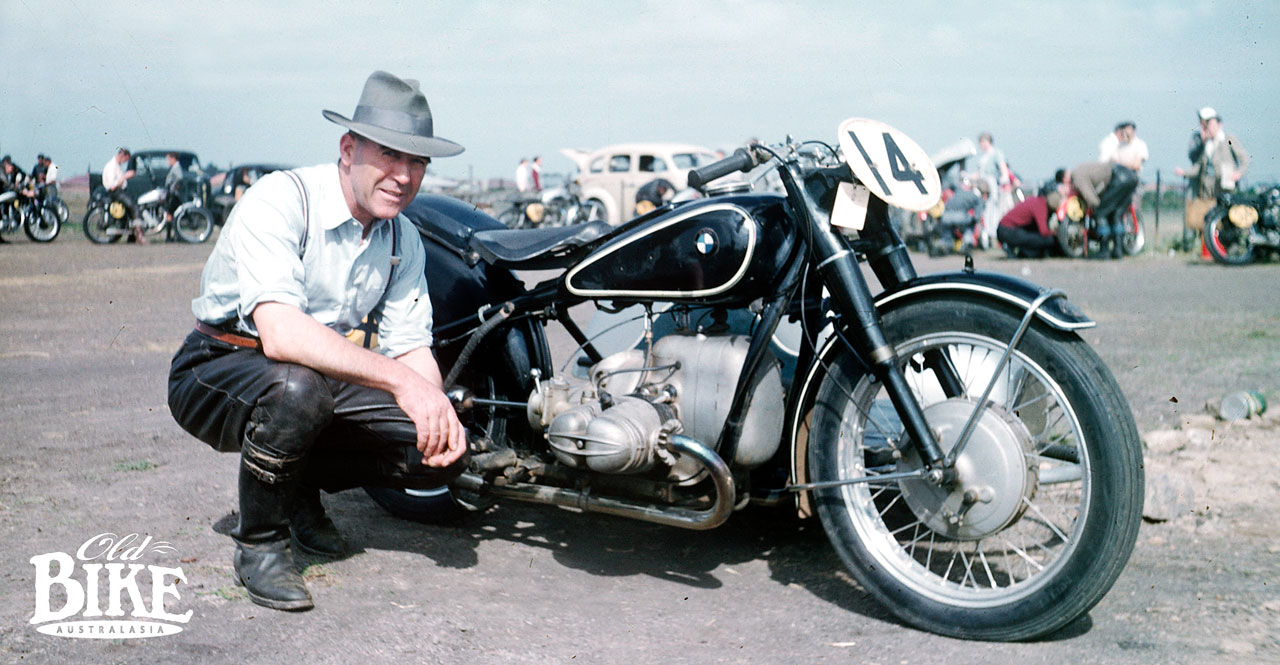
Today, Cherry Lake is a pleasant expanse of water with abundant bird life, with a paved cycling/walking track running around the perimeter. Look closely at the edges of the paving and in spots, you will see the crumbling remains of an asphalt surface. That was the Altona Motor Racing Circuit, which opened for business on February 21st, 1954 with a closed motorcycle meeting, promoted by the Harley Club of Victoria. Invited clubs were Harley, Preston, Geelong, Nunawading, East Malvern, Warrnambool and Mount Gambier. The circuit was officially opened by Mr Hubert Opperman, MHR and former champion cyclist, who declared that the track would go on to produce new champion riders and drivers. According to The Age newspaper, a crowd of 10,000, most of whom got in for free, turned up.
A few years before, the Victorian Sporting Car Club (VSCC) had constructed the Templestowe hill climb, which was just part of a planned full motor racing circuit. The climb was completed, but the circuit never left the drawing board. Still, the members, led by Neal Charge, were keen to establish a circuit near Melbourne, and had the construction equipment from Templestowe, so a 300-acre site was eventually identified near the Mobil Oil Refinery on Millers Road in the industrial suburb of Altona. The land parcel was mainly taken up with a swamp that dried up occasionally, and a plan was hatched to build a road around the perimeter of the swamp. A company, Altona Speedways Pty. Ltd. was formed for this purpose. Some of the low-lying areas were built up with hard fill and a 2.25-mile (3.62 km) circuit, roughly rectangular in shape, was laid out, with a width of about 25 feet (7.5 m). The company spent more than £20,000 ($40,000) on construction materials, but most of the labour was voluntary. It was slow going, and before the track had been completed the Light Car Club secured Albert Park for motor racing, and plans were announced for the new track at Phillip Island. Fishermen’s bend was also running regular meetings, and motorcycle had their own track at Darley, so there was plenty of competition.
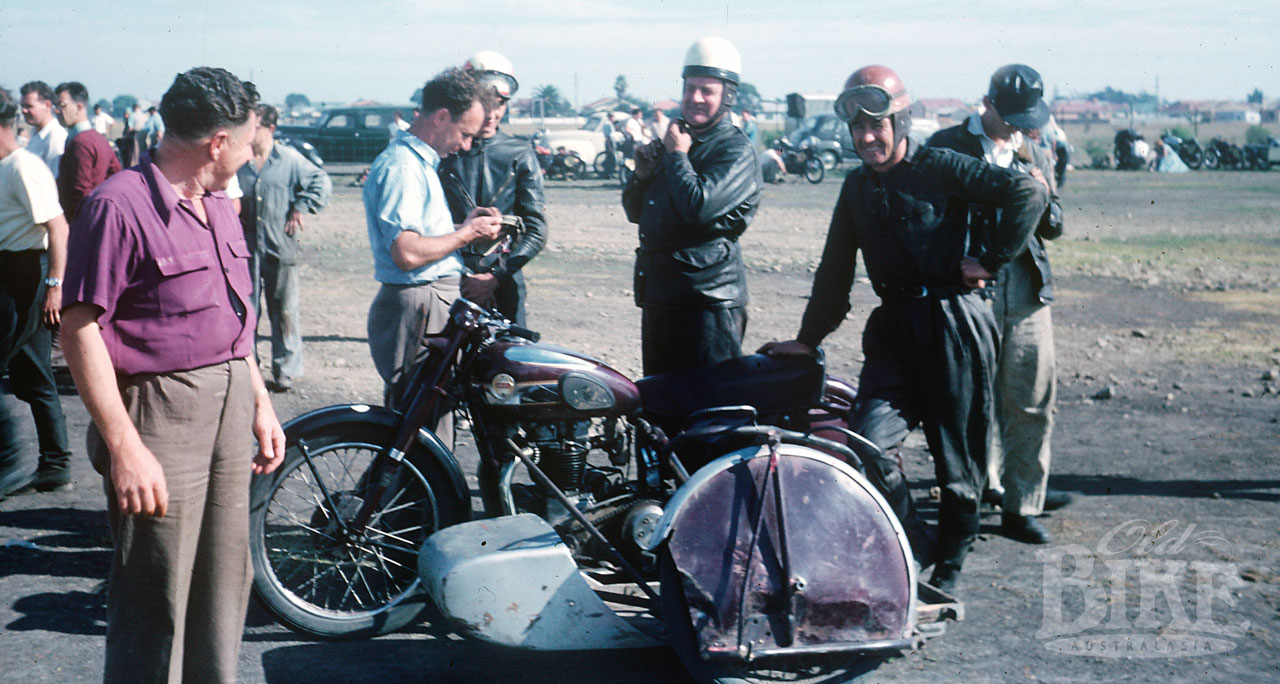
The track was dead flat, with a 1 km start/finish straight that was actually not straight at all. Racing was in a clockwise direction, and the first corner was a 90-degree right hander, followed by a short straight parallel to Millers Road and another similar corner. Another short straight led to a series of gentle esses and into a right hand hairpin at the westernmost point. A quick squirt through a sweeping left brought competitors to the final corner, a medium speed right hander onto the finish straight.
The first track surface was a spray coat of bitumen covered with blue metal screenings, and riders at the opening motorcycles-only meeting complained of being peppered with flying stones. By the end of the day, the track surface was littered with pot holes, and there were few competitors left for the later races in the program. The use of boulders to line parts of the track (where it had been reclaimed from the swamp) also came under heavy criticism.
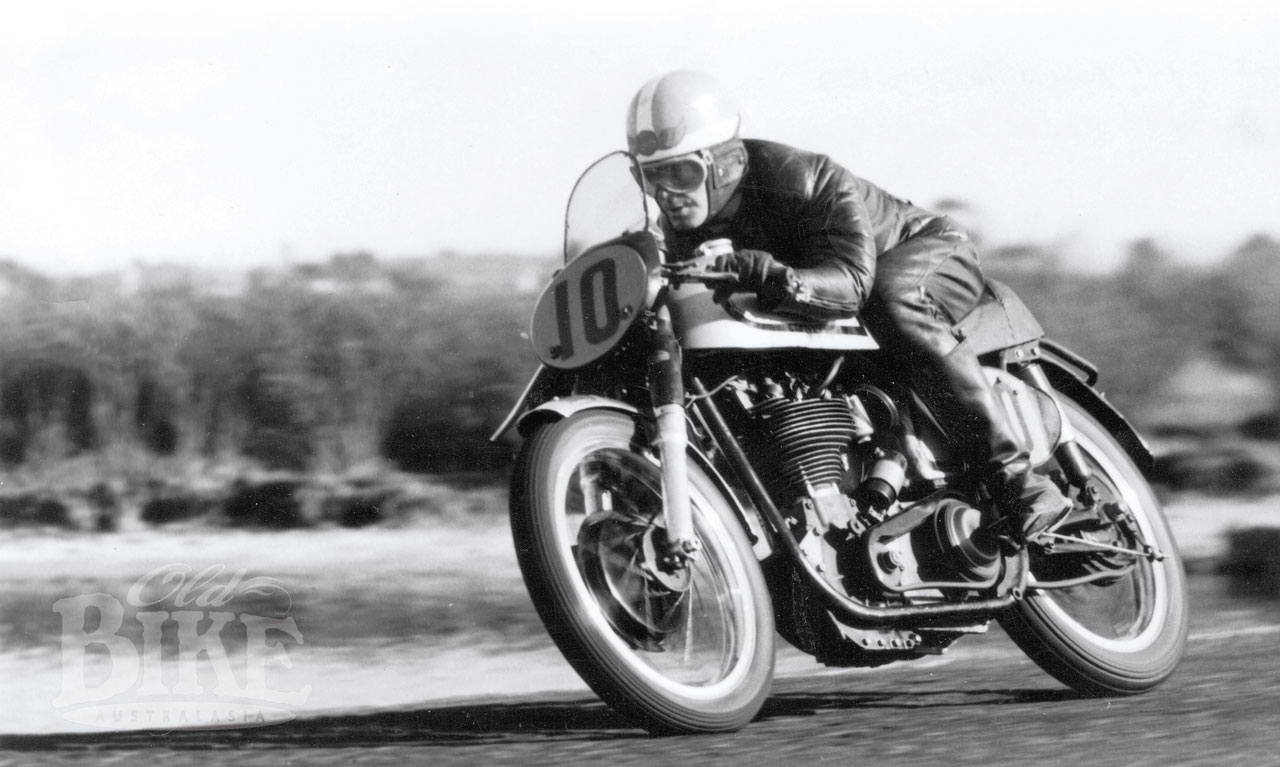
Practice was marred by several serious accidents due to the crumbling track surface, the most spectacular involving Jack Lodge and his passenger Max Rathbone, who rolled their Norton outfit, collecting Mount Gambier’s Laurie Fox on the way and putting both out for the day. During the lunch break the crowd was entertained by ex-army riders Eddy Pye and John Pugh (calling themselves the Moto-bats) who performed stunts and motorised acrobatics. A feature of the meeting was a time trial between Frank Sinclair’s Vincent outfit and Stan Jones’ 1100cc Cooper JAP, which the car won by several seconds. Jones’ best lap of 1 minute 57 seconds was the fastest of the day. Bruce Cameron had a good day, beating Walsh BSA team mate Ken Rumble in the 125 race, the Junior Classic, and the Senior Classic (on his 350 Velocette), both times from Roger Barker. Bernie mack did a clean-sweep of the sidecar events, while the 250 went to Ray Wason from Jack Rudd and Bruce Hailey. In the graded races, BSA-mounted Trevor Pound won the Junior Clubmen’s, while D.Nicol edged out John Atherton to win the Senior. The day’s final race, the Solo Handicap, was reduced from 10 to 5 laps because of the deteriorating state of the track, but it didn’t stop Cameron, who tore through the field to snatch victory in a photo finish over B. Bruce and Wason.
The car meeting, two weeks later, according to newspaper reports, attracted 12,000 spectators, but was marred by a fatal accident to Jack Lanham, who rolled his Vauxhall-engined Lombard. Jack Brabham won the main race in his Cooper Bristol, establishing the lap record at 1 minute 50 seconds, an average of about 74 mph (119 km/h).
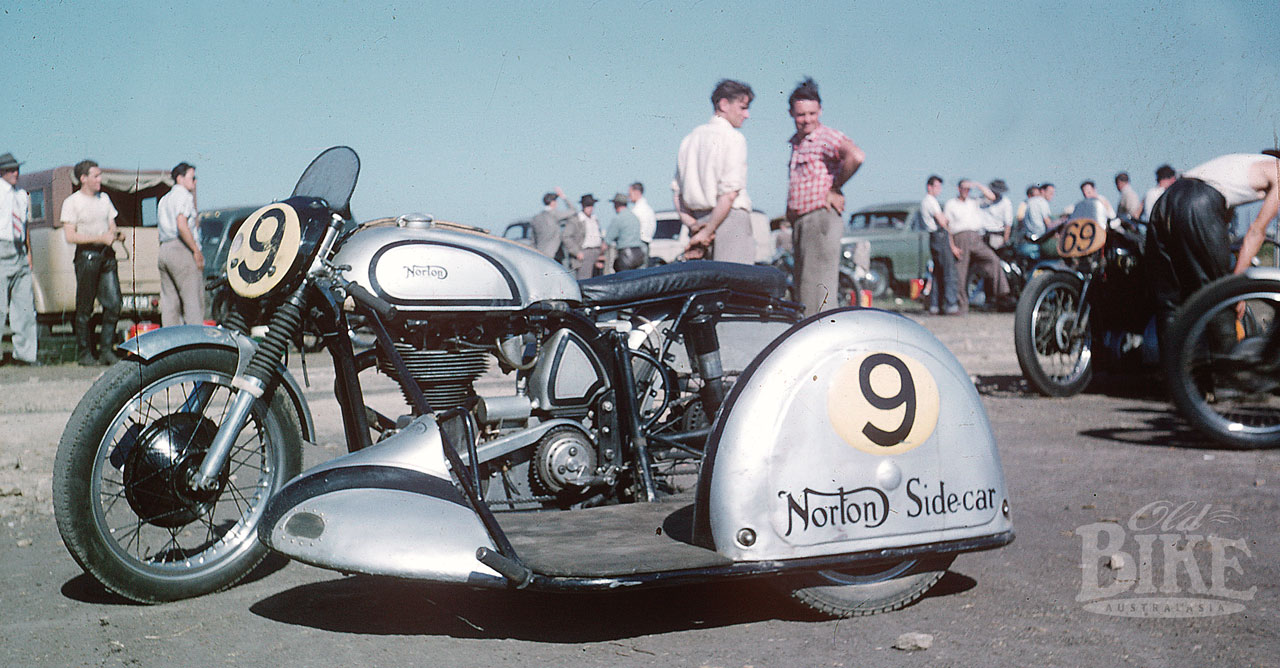
Several car meetings followed in 1954 but despite the presence of big names like Jones and Brabham, the crowds failed to show up. With promotion again by the Harley club, motorcycles were back for the first Open meeting on September 19, 1954, where Albury’s star rider Doug Fugger won the feature event, the Senior Road Race, setting a record lap of 1 minute 46 seconds and being clocked at 120 mph (193 km/h) on the main straight. Fugger had initially had his hands full with veteran Art Senior on his equally-venerable Ariel, but when Senior retired with engine trouble, Roger Barker took over second place on his 350 Norton. Alan McBean riding the ex-George Huse Featherbed Manx Norton won a race long battle for third with Cec Prior aboard a 7R AJS fitted with a 500cc Matchless G9 twin engine. The Junior Road Race went to Barker who came out on top of a close tussle over the BSAs of Rumble and Trevor Pound. Rumble in particular had the crowd on its feet with speedway style slides, but the last one almost got away from him and Barker won the sprint to the finish line.
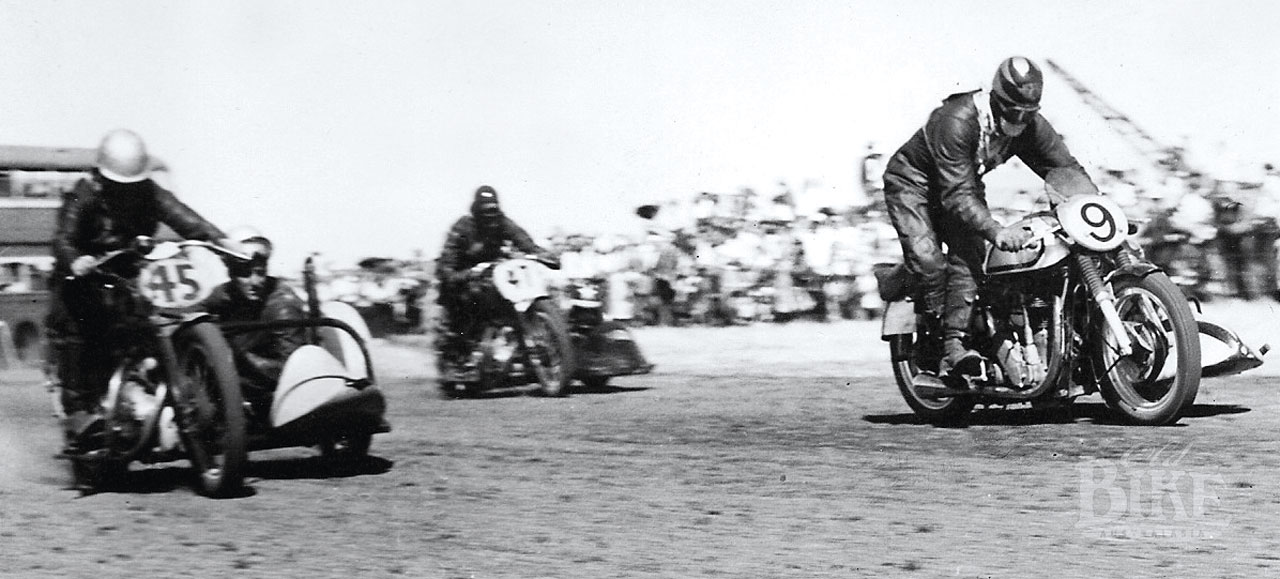
To combat the rise of Manx Norton-engined outfits, the meeting featured a race for pushrod machines, with Frank Pratt celebrating his 53rd birthday by winning on his BMW from the BSAs of Bill Sullivan and Bernie Mack. Other winners were Ken Rumble (125cc Walsh Bantam) who beat Jack Walters’ MV, Bruce Hailey (BSA) over Don Cameron in the Lightweight, John Atherton (Triumph) in the Senior Clubmen’s final, Rumble from Bob West in the Junior Clubmen’s final, and Bernie Mack (Norton) in the Senior Sidecar.
The failure of the circuit to attract paying spectators was a major problem for the investors in the holding company, who knew they had to build better facilities to attract crowds, but had not the finances to do so. Just two more car meetings were held; in March and May, 1955. By this stage some of the track had received a coating of hot-mix tar, transported from the nearby refinery. The bikes were back for another meeting on March 20, 1955, and being held just one week after the Victorian TT at Little River, was rather poorly supported by competitors and spectators alike.
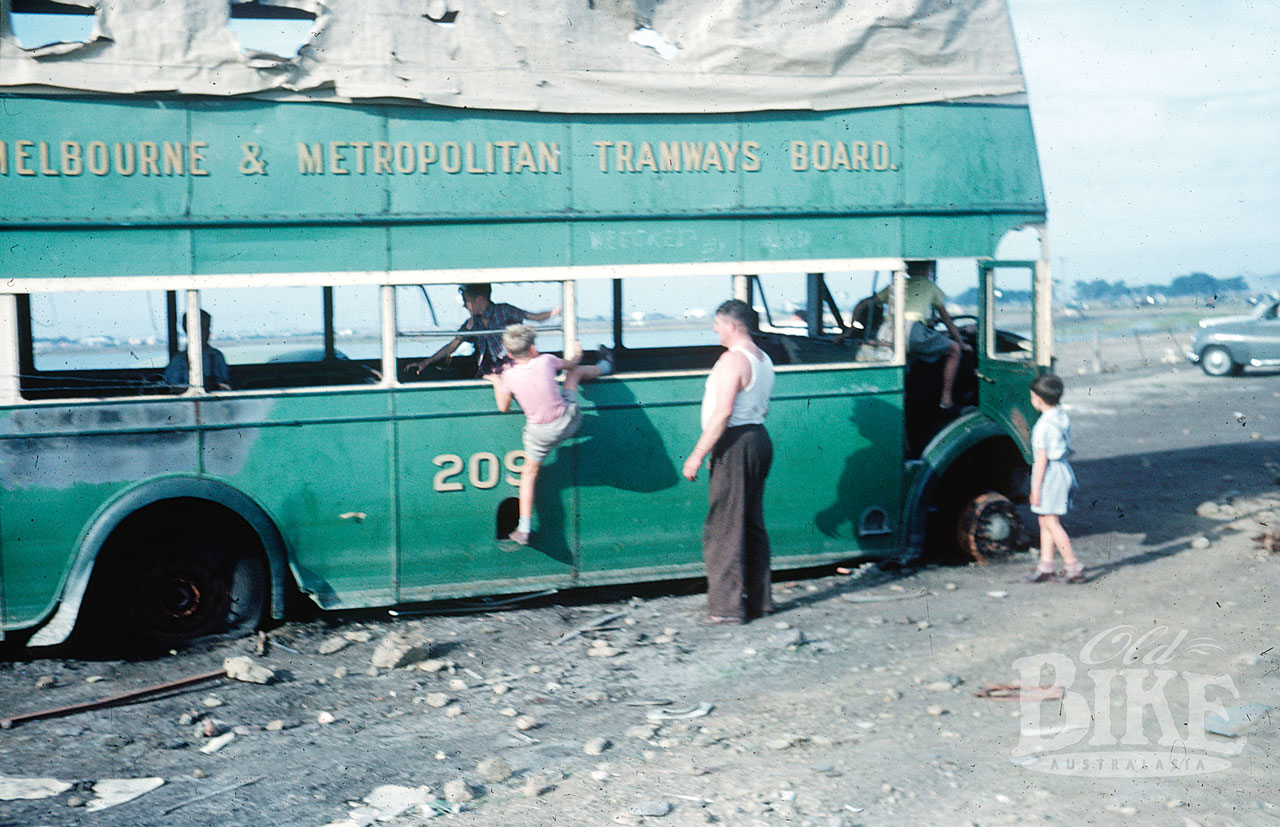
A twelve-race programme got under way at 11am, with Harley Clubman J.Barlett (Velocette) winning the first event, the Junior Novice Clubman. The 125 MVs of Max Brumhead and Jack Walters lead the Ultra Lightweight, until blown out of the way by the intrepid Rumble on the Walsh Bantam. Brumhead failed to complete the race, letting Ted McGan through for third. To everyone’s amazement, the highly experienced Geoff Curley was entered in the Senior Novice Clubmen’s race, and as expected, cakewalked the event. Don Cameron, on his neat and fast MOV Velocette, took out the Lightweight after disposing of Bruce Cameron’s Triumph, while the final of the Junior Clubmen’s, Gordon Rumble beat brother Ken and Geoff Curley. The first of the main events, the Junior classic, brought together the Manx Nortons of Roger Barker and Ray Wason the t ex-Maurie Quincey Manx (Quincey being en-route to Europe), but once again the pushrod BSA of the Rumble brothers forced the pace, with Barker winning narrowly from ken and Gordon. After the Senior Clubmen’s race, won by Curley, the Senior Sidecar field formed up. The big Vincents of George Murphy and Frank Sinclair looked set to fight out the race, but Sinclair was out earl, allowing Mack’s Norton and Rooney’s BMW into the minor placings. The feature event, the Senior Classic over eight laps, saw Curley and his Triumph again make the running, before being ousted by Owen Archibald’s Norton who built up a healthy lead. With the race in the bag, Archibald’s front brake began playing up, allowing Barker and Noel Cheney (Norton) to close up in the race to the line, but Archibald just held on for the win.
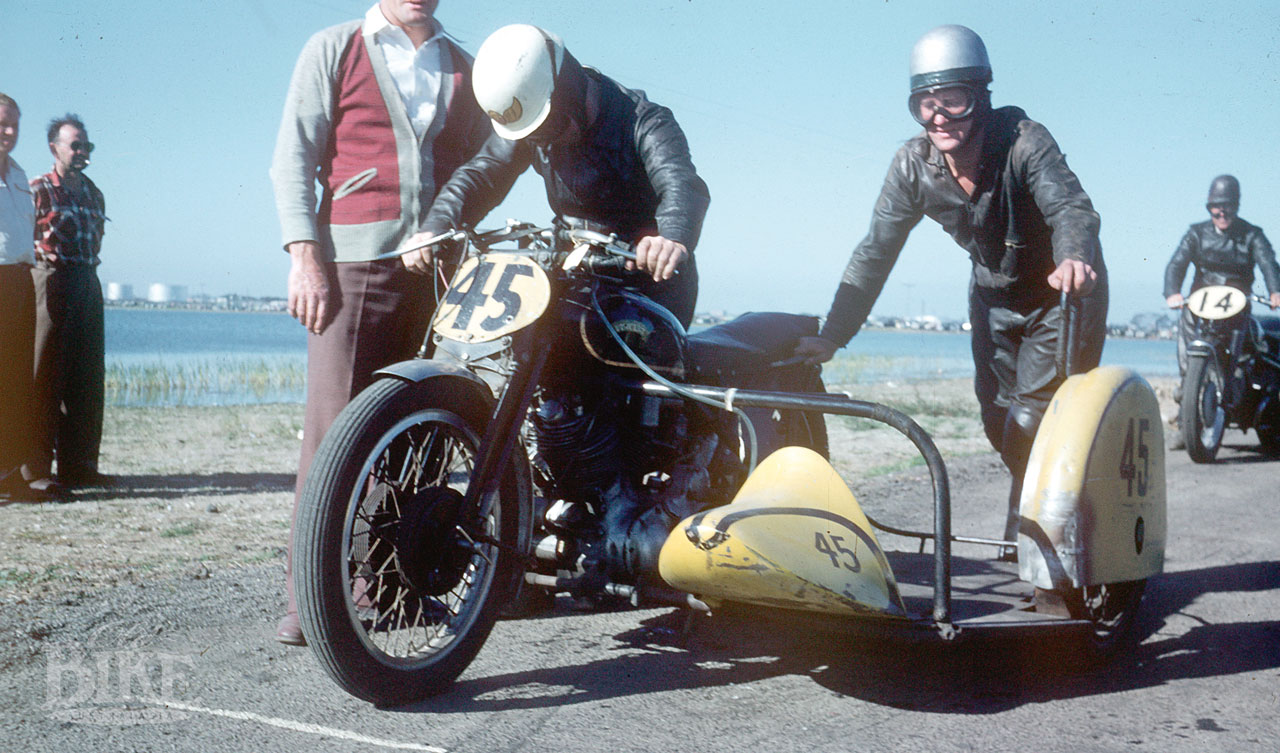
Another car meeting followed in May, but by then both two and four wheel promoters were questioning the economic viability of the meetings. Then, as if mocked by fate, the decision was taken out of their hands as the swamp mysteriously burst its banks and the entire circuit vanished from view. It stayed that way much of the winter of 1955, and when it re-emerged, much of the track’s surface had simply disappeared. There was no question of rebuilding, and Altona’s chapter in motor racing’s history ended.
There are still traces of the old circuit left, decaying tarmac to the sides of the bitumen running/cycling path, especially on the northern side where the start/finish and pit area was located.
Story: Jim Scaysbrook • Photos: Alan Gillespie, Robert Johnston, John Atherton, Noel Cheney


